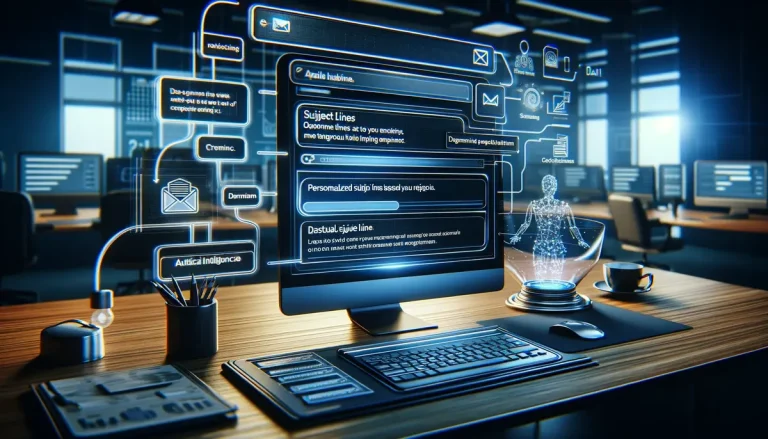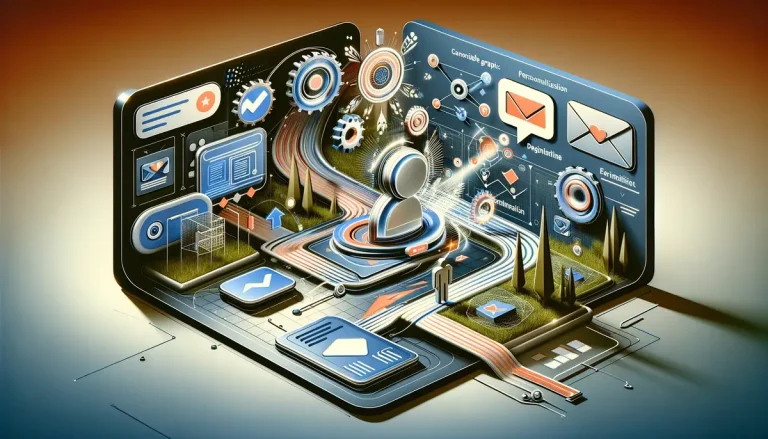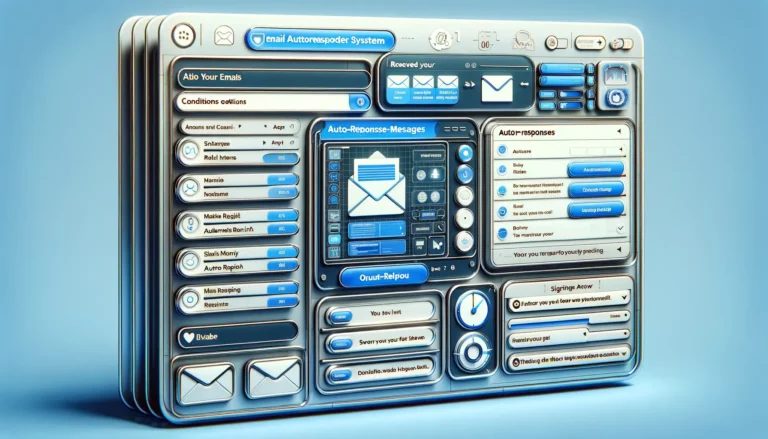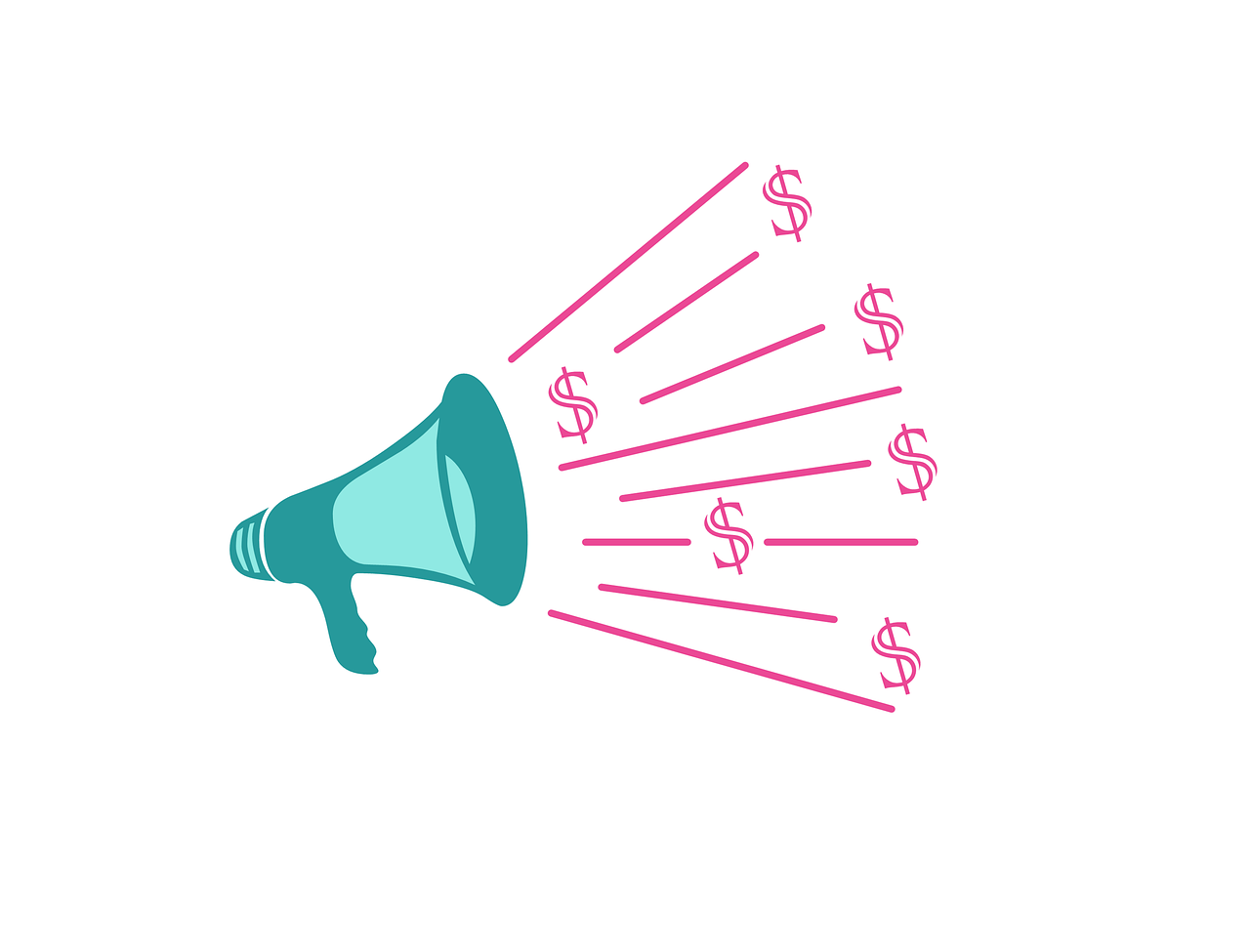Imagine hitting the “Send” button and watching your cold email vanish into the digital ether, hoping it lands not in the dreaded spam folder but in the coveted inbox of your potential client. Now, picture that client eagerly opening your email and responding almost instantly.
Sounds like a dream, doesn’t it? Yet, it’s a dream that hinges not just on what you say, but when you say it.
Is Timing Just a Numbers Game?
“You can send it anytime; it’s all a numbers game,” your colleague argues. You’ve heard this line before—maybe even from your boss. But you’re here because your intuition tells you otherwise.
Like a seasoned chef aware that the timing of each ingredient impacts the dish’s final taste, you sense that timing is not to be brushed aside. You suspect that the ‘when’ could be as pivotal as the ‘what’ and the ‘how’ in cold emailing.
What This Guide Offers
So, why does the clock’s hand matter when sending that crucial email? This guide is not just another piece of content that skims the surface; it’s a deep dive into the art and science of maximizing cold email open rates.
From debunking myths to unpacking statistics and case studies, we’ll explore every facet of why timing is critical. If you’ve ever felt the sting of low open rates or the frustration of silence from the other end, this guide is your road to redemption.
We’re not merely interested in opinions; we’re after facts—evidence-based insights that equip you with the knowledge to nail the timing aspect of your cold emails. By the end of this read, you’ll be armed with actionable strategies that turn the clock into your ally, rather than an obstacle.
So let’s get started on unlocking the secrets to finding the best time to send cold emails.
Why Timing Matters
When People Are Most Receptive
Let’s start with a simple yet profound truth: People are creatures of habit. Our daily routines, from the first sip of morning coffee to the last scroll through social media before bed, are ingrained in us.
Understanding these patterns isn’t just psychology 101—it’s email marketing gold. Send an email when your recipient is most likely to be sifting through their inbox, and you significantly increase the chances of your message getting the attention it deserves.
Cold, Hard Statistics
Think timing is overrated? The numbers beg to differ. Multiple studies indicate that emails sent during specific windows have higher open and click-through rates. For example, a report by CoSchedule suggests that Tuesdays and Thursdays between 10 AM and 2 PM have the highest engagement rates. These are not just one-off findings but trends backed by data collected over years and across industries.
Timing’s Impact on the Entire Sales Funnel
But let’s not stop at open rates. Timing affects more than just whether someone clicks on your email; it influences actions down the sales funnel. An email opened at the right time can lead to higher engagement, more website visits, and ultimately, increased conversions.
In essence, nailing the timing is akin to setting off a positive chain reaction that reverberates through your entire marketing strategy.
The Cost of Getting It Wrong
Get the timing wrong, and the fallout isn’t just a missed opportunity—it could be a tarnished brand image. An email sent at an inopportune time may be perceived as a nuisance or, worse, spam.
This is especially detrimental if you’re aiming for long-term relationships with clients and partners, which most businesses are. Misfiring on the timing front can have you tagged as ‘just another marketer,’ an impression difficult to shake off.
Common Myths About Cold Email Timing
Myth 1: Any Time is a Good Time
Perhaps the most pervasive myth is that timing doesn’t really matter—that you can hit ‘Send’ whenever you feel like it. This myth feeds off the numbers game theory, the idea that if you send enough emails, some are bound to get opened.
While there’s a grain of truth in the law of averages, it’s a risky strategy that ignores the power of optimization. Relying solely on volume rather than precision is like casting a wide net in the ocean and hoping you catch something.
You might, but you’ll also expend a lot more effort and resources than you need to.
Myth 2: Weekends are Off-Limits
Many people swear by the idea that weekends are a no-go zone for cold emails. The logic seems sound: professionals aren’t checking their business emails over the weekend, so your email will likely get buried under the Monday morning influx.
However, some studies show that weekend emails have higher open rates, possibly because there’s less competition. The key takeaway? Don’t discount weekends altogether; they might just be an untapped opportunity for your specific audience.
Myth 3: Mornings are Bad for Business Emails
Another widespread belief is that people are too busy in the morning to pay attention to new emails. The thought process here is that individuals are catching up on overnight messages and setting up their workday.
While mornings can be a hectic time, they can also be a period when people are most alert and attentive. Some research even suggests that emails sent in the late morning achieve better engagement than those sent in the afternoon.
Myth 4: People Don’t Read Emails During Holidays
It’s easy to assume that holidays are a terrible time for sending business-related emails. After all, people are off work, perhaps traveling or spending time with family.
But remember, the lesser the competition, the more your email stands out. Some marketers have found success by timing their cold emails to go out just before or after major holidays, capturing the attention of those who are either winding down or gearing up for work.
Setting the Record Straight
The myths surrounding cold email timing are not only numerous but also, in many cases, misleading.
Adhering to these myths can result in a one-size-fits-all approach that fails to consider the unique habits and preferences of your target audience.
So, as we venture further into finding the best time to send cold emails, let’s agree to make our decisions based on data and tailored strategies, not outdated beliefs.
Factors to Consider for Timing
Know Your Audience: Time Zones Matter
Imagine crafting the perfect cold email and sending it at 10 AM, only to realize your recipient lives in a different time zone where it’s 3 AM. Not ideal, right?
One of the first steps in nailing your cold email timing is understanding the geographical location of your audience.
Factor in time zones when scheduling emails, especially if you’re reaching out to people internationally.
Industry-Specific Timing: Not All Sectors Are Created Equal
An optimal time for a technology executive to read an email may differ vastly from that of a restaurant owner.
People in different industries have different work routines and thus differing ‘high-availability’ windows. Research your target industry to understand its unique schedule and adapt your timing accordingly.
Day of the Week: The Sweet Spot Varies
While some studies suggest Tuesdays and Thursdays are the best days for sending emails, these findings aren’t universally applicable.
The optimal day can depend on numerous factors such as the industry, the particular habits of your target audience, and even current events.
So rather than rigidly sticking to generalized advice, consider running A/B tests to identify the day that generates the best results for you.
Current Events: Be Sensitive to the Zeitgeist
Is it the holiday season? Is your target company in the middle of a quarterly review?
Current events can significantly impact the effectiveness of your cold email timing. Keep an eye on the calendar and the news to ensure you’re not sending emails that will be ignored or, worse, considered insensitive.
Seasonality: Understand the Highs and Lows
Most industries have busy and slow seasons. Recognize when your target audience is most likely to be swamped with work and when they might have more breathing room to entertain a cold email.
Use this knowledge to strategically time your outreach.
The Follow-Up: Timing Isn’t a One-Off Game
Sending the initial email is just the first step; effective follow-up emails are crucial for maximizing engagement.
Plan the timing of your follow-ups as meticulously as your first email, ensuring that they are neither too soon to be annoying nor too late to be irrelevant.
How to Experiment with Timing
Start with A/B Testing
A/B testing, also known as split testing, is an invaluable tool when it comes to figuring out the best time to send cold emails. In a nutshell, A/B testing involves sending the same email at different times to separate but statistically identical groups from your target audience.
This allows you to isolate the variable of ‘timing’ and assess its impact on metrics like open rates and click-through rates. A/B tests provide data-driven insights that can replace gut feelings or anecdotal evidence.
Frequency of Experiments
Consistency is key. One-off tests can yield skewed results affected by outliers or random events.
Instead, make A/B testing a regular part of your email marketing routine. Continuous data collection over an extended period provides more reliable findings, helping you make an educated decision on the best time to send cold emails.
Employ Analytics Tools
Manual tracking is not only tedious but also prone to errors. Utilize email analytics tools that offer features like tracking open rates, click-through rates, and engagement metrics.
Many CRM platforms, such as Bigly Sales, offer built-in analytics that can help you easily track and analyze the performance of your cold emails.
Test Across Different Segments
Different audience segments may respond differently to email timing. For example, C-level executives might have different email-checking habits than mid-level managers.
Conduct separate tests for different audience segments to customize your timing strategy for each.
Monitor Engagement Beyond Opens
While open rates are a crucial metric, they don’t tell the whole story. You should also be monitoring actions taken after the email is opened.
Did the reader click on a link? Did they reply? This deeper level of engagement is equally significant in determining the best timing.
Analyze and Refine
After each testing cycle, make it a point to sit down and analyze the results thoroughly. Identify patterns, anomalies, and other significant data points.
Use these insights to refine your subsequent tests and, eventually, your overall email timing strategy.
Conclusion
As we wrap up this comprehensive guide, it’s crucial to remember that timing in the context of cold emails is not merely a matter of hours and minutes on a clock.
It’s a complex interplay of numerous factors—ranging from your audience’s habits and industry norms to current events and even the day of the week—that collectively influence the success of your outreach efforts.
While it’s tempting to look for quick answers or universally applicable ‘best times,’ the reality is far more nuanced.
The ideal timing for your cold emails is something that you’ll discover through careful research, thoughtful experimentation, and a willingness to adapt and evolve. It’s an ongoing process, one that demands both strategic planning and tactical flexibility.
By debunking myths, understanding the key factors, and committing to data-driven experimentation, you’ll not only find the best time to send your cold emails but also significantly improve your overall email marketing strategy.
Remember, each email you send is an opportunity to connect, engage, and ultimately convert a potential customer. And in this game, timing is not just a detail; it’s a game-changer.
We hope that this guide serves as a valuable resource in your quest to optimize your cold email campaigns. The journey to find the perfect timing may be intricate and ongoing, but the rewards—higher open rates, better engagement, and more conversions—are well worth the effort.







